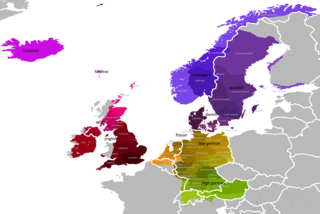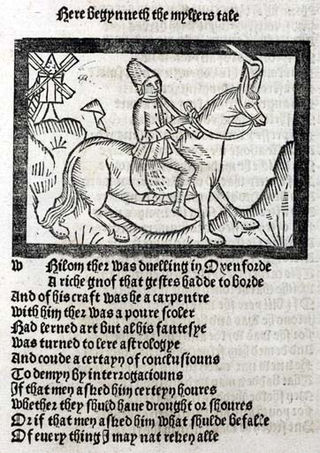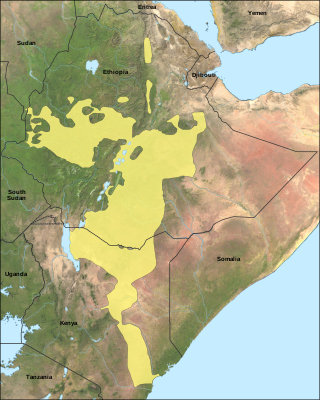| Modern English | |
|---|---|
| New English | |
| English | |
| Region | English-speaking world |
| Era | Late 17th century AD – present [1] |
Early forms | |
| Latin script (English alphabet) English Braille, Unified English Braille | |
| Language codes | |
| ISO 639-1 | en |
| ISO 639-2 | eng |
| ISO 639-3 | eng |
| Glottolog | stan1293 |
| Linguasphere | 52-ABA |
Modern English, sometimes called New English (NE) [2] as opposed to Middle and Old English, is the form of the English language that has been spoken since the end of the Great Vowel Shift in England, which was completed by the end of the 17th century.
With some differences in vocabulary, texts which date from the 16th and early 17th century, such as the works of William Shakespeare and the King James Bible, are considered Modern English texts, or more specifically, they are referred to as texts which were written in Early Modern English or they are referred to as texts which were written in Elizabethan English. Through colonization, English was adopted in many regions of the world by the British Empire, such as Anglo-America, the Indian subcontinent, Africa, Australia and New Zealand.
Modern English has many dialects spoken in many countries throughout the world, sometimes collectively referred to as the English-speaking world. These dialects include (but are not limited to) American, Australian, British (containing Anglo-English, Scottish English and Welsh English), Canadian, Caribbean, Hiberno-English (including Ulster English), Indian, Sri Lankan, Pakistani, Nigerian, New Zealand, Philippine, Singaporean, and South African English.
According to the Ethnologue , there are almost one billion speakers of English as a first or second language. [3] English is spoken as a first or a second language in many countries, with most native speakers being in the United States, the United Kingdom, Australia, Canada, Singapore, New Zealand and Ireland; there are also large populations in India, Malta, Belize, Pakistan, Nigeria, Kenya, the Caribbean, the Philippines, Northern Europe and Southern Africa. It "has more non-native speakers than any other language, is more widely dispersed around the world and is used for more purposes than any other language". Its large number of speakers, plus its worldwide presence, have made English a common language (lingua franca) "of the airlines, of the sea and shipping, of computer technology, of science and indeed of (global) communication generally". [4]
Modern English evolved from Early Modern English which was used from the beginning of the Tudor period until the Interregnum and Stuart Restoration in England. [5] By the late 18th century, the British Empire had facilitated the spread of Modern English through its colonies and geopolitical dominance. Commerce, science and technology, diplomacy, art, and formal education all contributed to English becoming the first truly global language. Modern English also facilitated worldwide international communication. English was adopted in North America, India, parts of Africa, Australia, and many other regions. In the post-colonial period, some newly created nations that had multiple indigenous languages opted to continue using Modern English as the official language to avoid the political difficulties inherent in promoting one indigenous language above another. [6] [7]
The following is an outline of the major changes in Modern English compared to its previous form (Middle English), and also some major changes in English over the course of the 20th century. Note, however, that these are generalizations, and some of these may not be true for specific dialects:
Up until the American–British split (1600–1725), some major phonological changes in English included:
After the American-British split, further changes to English phonology included:
Changes in alphabet and spelling were heavily influenced by the advent of printing and continental printing practices.
Consequently, Modern English came to use a purely Latin alphabet of 26 letters.
American English, sometimes called United States English or U.S. English, is the set of varieties of the English language native to the United States. English is the most widely spoken language in the United States and in most circumstances is the de facto common language used in government, education and commerce. It is also the official language of most U.S. states. Since the late 20th century, American English has become the most influential form of English worldwide.
English orthography is the writing system used to represent spoken English, allowing readers to connect the graphemes to sound and to meaning. It includes English's norms of spelling, hyphenation, capitalisation, word breaks, emphasis, and punctuation.

The Germanic languages are a branch of the Indo-European language family spoken natively by a population of about 515 million people mainly in Europe, North America, Oceania and Southern Africa. The most widely spoken Germanic language, English, is also the world's most widely spoken language with an estimated 2 billion speakers. All Germanic languages are derived from Proto-Germanic, spoken in Iron Age Scandinavia and Germany.
Old English, or Anglo-Saxon, is the earliest recorded form of the English language, spoken in England and southern and eastern Scotland in the early Middle Ages. It developed from the languages brought to Great Britain by Anglo-Saxon settlers in the mid-5th century, and the first Old English literary works date from the mid-7th century. After the Norman Conquest of 1066, English was replaced for several centuries by Anglo-Norman as the language of the upper classes. This is regarded as marking the end of the Old English era, since during the subsequent period the English language was heavily influenced by Anglo-Norman, developing into what is now known as Middle English in England and Early Scots in Scotland.

Middle English is a form of the English language that was spoken after the Norman Conquest of 1066, until the late 15th century. The English language underwent distinct variations and developments following the Old English period. Scholarly opinion varies, but Oxford University Press specifies the period when Middle English was spoken as being from 1100 to 1500. This stage of the development of the English language roughly followed the High to the Late Middle Ages.

Kazakh or Qazaq is a Turkic language of the Kipchak branch spoken in Central Asia by Kazakhs. It is closely related to Nogai, Kyrgyz and Karakalpak. It is the official language of Kazakhstan and a significant minority language in the Ili Kazakh Autonomous Prefecture in Xinjiang, north-western China, and in the Bayan-Ölgii Province of western Mongolia. The language is also spoken by many ethnic Kazakhs throughout the former Soviet Union, Germany, and Turkey.
Chechen is a Northeast Caucasian language spoken by approximately 1.8 million people, mostly in the Chechen Republic and by members of the Chechen diaspora throughout Russia and the rest of Europe, Jordan, Austria, Turkey, Azerbaijan, Ukraine, Central Asia and Georgia.

Tatar is a Turkic language spoken by the Volga Tatars mainly located in modern Tatarstan, as well as Siberia. It should not be confused with Crimean Tatar or Siberian Tatar, which are closely related but belong to different subgroups of the Kipchak languages.

Western Armenian is one of the two standardized forms of Modern Armenian, the other being Eastern Armenian. It is based mainly on the Istanbul Armenian dialect, as opposed to Eastern Armenian, which is mainly based on the Yerevan Armenian dialect.

Oromo, historically also called Galla, is an Afroasiatic language that belongs to the Cushitic branch. It is native to the Ethiopian state of Oromia and Northern Kenya and is spoken predominantly by the Oromo people and neighboring ethnic groups in the Horn of Africa. It is used as a lingua franca particularly in the Oromia Region and northeastern Kenya.

Kashmiri or Koshur is a Dardic Indo-Aryan language spoken by around 7 million Kashmiris of the Kashmir region, primarily in the Kashmir Valley of the Indian-administrated union territory of Jammu and Kashmir. Kashmiri has split ergativity and the unusual verb-second word order.
African-American Vernacular English (AAVE) is the variety of English natively spoken, particularly in urban communities, by most working- and middle-class African Americans and some Black Canadians. Having its own unique grammatical, vocabulary, and accent features, AAVE is employed by middle-class Black Americans as the more informal and casual end of a sociolinguistic continuum. However, in formal speaking contexts, speakers tend to switch to more standard English grammar and vocabulary, usually while retaining elements of the non-standard accent. AAVE is widespread throughout the United States, but is not the native dialect of all African Americans, nor are all of its speakers African American.

Southern or South Sámi is the southwesternmost of the Sámi languages, and is spoken in Norway and Sweden. It is an endangered language; the strongholds of this language are the municipalities of Snåsa, Røyrvik, Røros and Hattfjelldal in Norway. Of the approximately 2000 Southern Sami, only about 500 still speak fluent Southern Sami. This language belongs to the Saamic group within the Uralic language family.
Southern American English or Southern U.S. English is a regional dialect or collection of dialects of American English spoken throughout the Southern United States, though concentrated increasingly in more rural areas, and spoken primarily by White Southerners. In terms of accent, its most innovative forms include southern varieties of Appalachian English and certain varieties of Texan English. Popularly known in the United States as a Southern accent or simply Southern, Southern American English now comprises the largest American regional accent group by number of speakers. Formal, much more recent terms within American linguistics include "Southern White Vernacular English" and "Rural White Southern English".
Early Modern English or Early New English (ENE) is the stage of the English language from the beginning of the Tudor period to the English Interregnum and Restoration, or from the transition from Middle English, in the late 15th century, to the transition to Modern English, in the mid-to-late 17th century.

Udmurt is a Permic language spoken by the Udmurt people who are native to Udmurtia. As a Uralic language, it is distantly related to languages such as Finnish, Estonian, Mansi, Khanty, and Hungarian. The Udmurt language is co-official with Russian within Udmurtia.
Suret, also known as Assyrian refers to the varieties of Northeastern Neo-Aramaic (NENA) spoken by Christians, namely Assyrians. The various NENA dialects descend from Old Aramaic, the lingua franca in the later phase of the Assyrian Empire, which slowly displaced the East Semitic Akkadian language beginning around the 10th century BC. They have been further heavily influenced by Classical Syriac, the Middle Aramaic dialect of Edessa, after its adoption as an official liturgical language of the Syriac churches, but Suret is not a direct descendant of Classical Syriac.
Dinka is a Nilotic dialect cluster spoken by the Dinka people, a major ethnic group of South Sudan. There are several main varieties, such as Padang, Rek, Agaar, Ciec, Apaak, Aliab, Bor, Hol, Nyarweng, Twic Bor and Twic Mayardit, which are distinct enough to require separate literary standards. Jaang, Jieng or Muonyjieng is used as a general term to cover all Dinka languages. Recently Akutmɛ̈t Latueŋ Thuɔŋjäŋ has proposed a unified written grammar of Dinka.

English is a West Germanic language in the Indo-European language family, whose speakers, called Anglophones, originated in early medieval England. The namesake of the language is the Angles, one of the ancient Germanic peoples that migrated to the island of Great Britain.

Yolmo (Hyolmo) or Helambu Sherpa, is a Tibeto-Burman language of the Hyolmo people of Nepal. Yolmo is spoken predominantly in the Helambu and Melamchi valleys in northern Nuwakot District and northwestern Sindhupalchowk District. Dialects are also spoken by smaller populations in Lamjung District and Ilam District and also in Ramecchap District. It is very similar to Kyirong Tibetan and less similar to Standard Tibetan and Sherpa. There are approximately 10,000 Yolmo speakers, although some dialects have larger populations than others.
Total users in all countries: 942,533,930 (as L1: 339,370,920; as L2: 603,163,010)